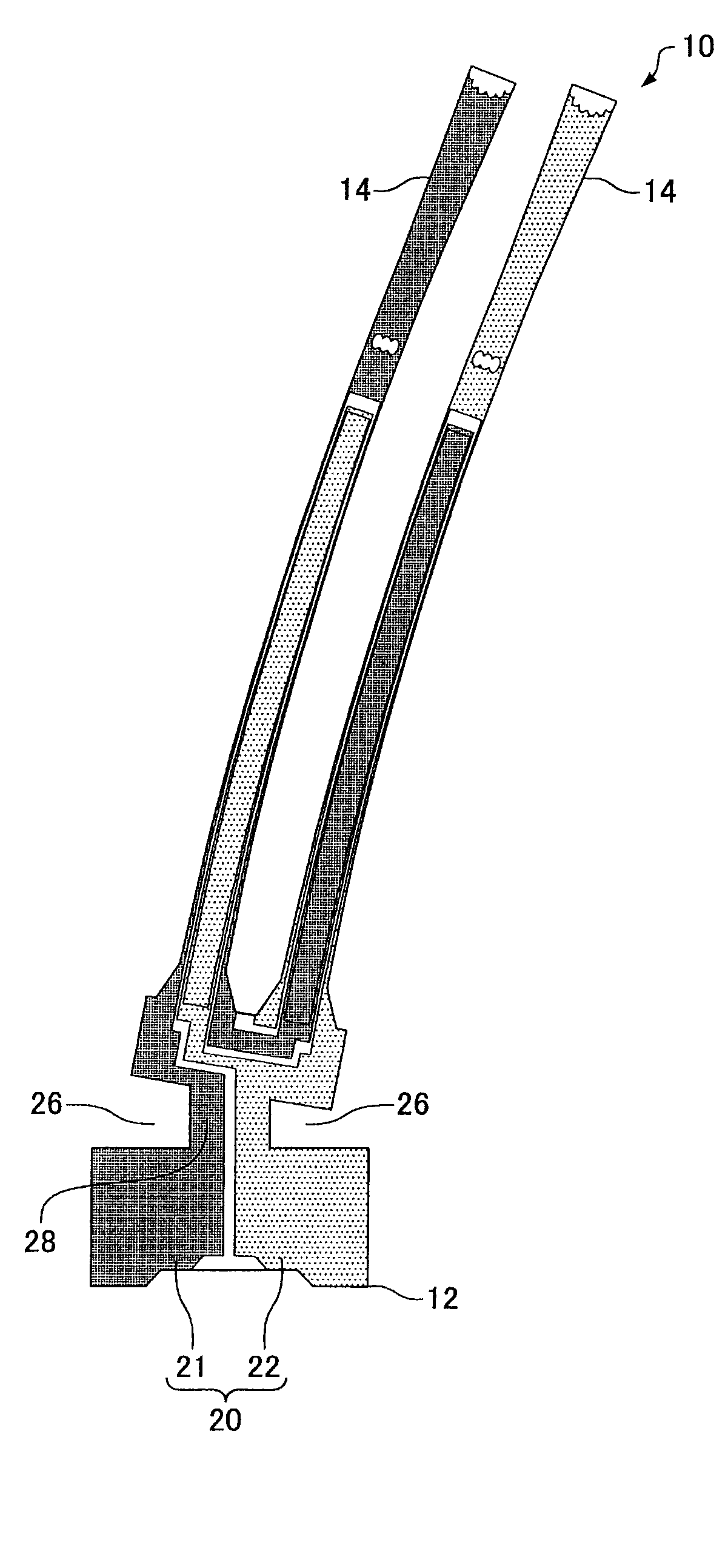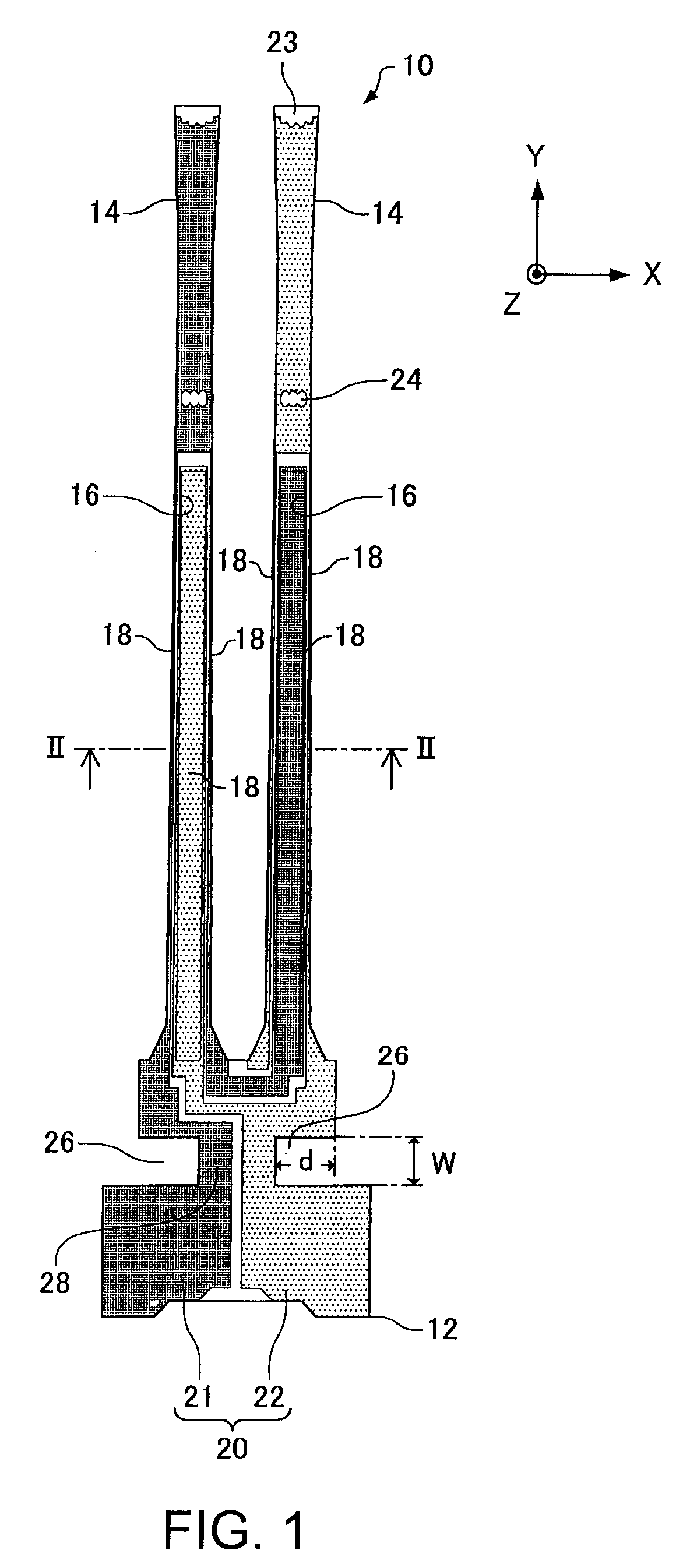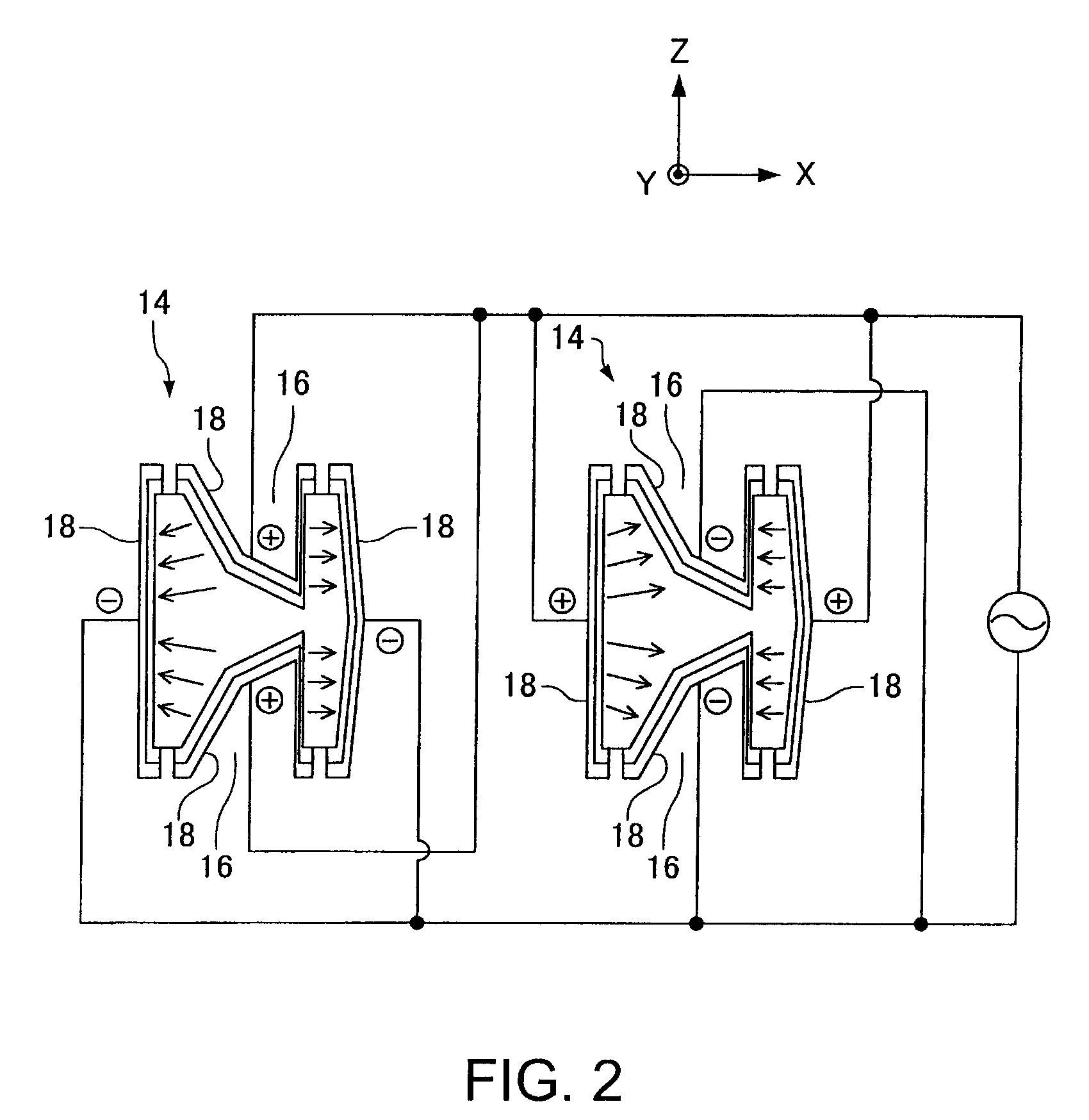Tuning fork type piezoelectric resonator having a node of common mode vibration in constructed part of base
a technology of piezoelectric resonators and common mode vibration, which is applied in the direction of generators/motors, instruments, and device material selection, etc., can solve the problems of deterioration of frequency characteristics, insufficient stability of resonator elements, and inability to stand practical use of resonator elements, etc., to achieve stability and stability. characteristics
- Summary
- Abstract
- Description
- Claims
- Application Information
AI Technical Summary
Benefits of technology
Problems solved by technology
Method used
Image
Examples
Embodiment Construction
[0021]FIG. 1 is a plan diagram showing a tuning fork type piezoelectric resonator element according to one embodiment of the invention. FIG. 2 is an enlarged sectional diagram of the tuning fork type piezoelectric resonator element of FIG. 1, taken on a line II-II. A bottom surface of the resonator element of FIG. 1 shows symmetry, as does the plan diagram. A tuning fork type piezoelectric resonator element 10, which is made of quartz crystal, has front and rear surfaces which face opposite from each other and define the thickness of the resonator arms. The tuning fork type piezoelectric resonator element 10 includes a base 12 and a pair of resonator arms 14 independently extending from the base 12. In addition to the resonator arms 14, the base 12 may also have support arms not shown in the drawings.
[0022]The resonator arms 14 includes: the front and rear surfaces facing opposite from each other and defining the thickness of the arms 14, and side surfaces connecting the front and r...
PUM
 Login to View More
Login to View More Abstract
Description
Claims
Application Information
 Login to View More
Login to View More - R&D
- Intellectual Property
- Life Sciences
- Materials
- Tech Scout
- Unparalleled Data Quality
- Higher Quality Content
- 60% Fewer Hallucinations
Browse by: Latest US Patents, China's latest patents, Technical Efficacy Thesaurus, Application Domain, Technology Topic, Popular Technical Reports.
© 2025 PatSnap. All rights reserved.Legal|Privacy policy|Modern Slavery Act Transparency Statement|Sitemap|About US| Contact US: help@patsnap.com



